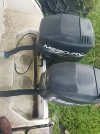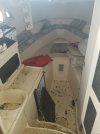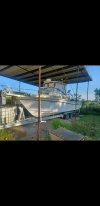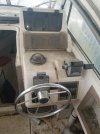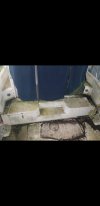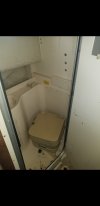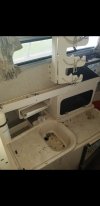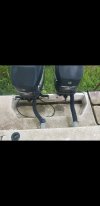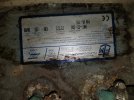Thanks for the interest and replies!
Lol, Oh yeah, it's a project.
No, it has not been submerged.
It's just DIRTY from sitting.
Surprisingly, it was under a cover (with no side protection). I think critters brought in the dirt.
Transom is solid. I jumped on the motors and no movement.
FYI, I currently have a 2320 robalo we routinely take 50 miles offshore. So, not new to offshore boats, but this one is bigger and in a state of disrepair.
I checked compression on the motors before the sale and all of the cylinders had 120 psi with less than 10% variance. No rust on spark plugs.
The motors look clean, and I am very familiar with these engines, so I am confident they will be running in short order. Love the simplicity of of the old carbed outboards.
Gameplan on the motors is to:
1. Rebuild pulse fuel pumps.
2. Soak carbs for atleast 24 hours, blow out jets, resoak, blow out again, inspect needle valve, floats, install new gasket kits, and reinstall carbs.
3. New spark plugs.
4. New fuel lines.
5. New fuel filters.
6. Delete oil injection, go with premix.
7. Fog cylinders with oil before startup and turn over motor with plugs out.
8. Rebuild water pumps, or run with hose on water tube with lowers off (initially on muffs)
9. Startup on muffs with 3 gallon premix tanks with fresh non ethanol fuel.
10. Considering intall of composite reeds for safety factor. (Dont want to chance a chipped reed and blown powerhead)
11. Edit: new thermostats.
Initial boat side plan of action:
1. Major cleaning with electric pressure washer (keep wand far away to reduce potential gel coat damage)
2. Follow up with hull cleaner to get rid of staining.
3. Inspect, bleed hydraulic steering system to determine if it is holding pressure.
4. Pull fuel tank hatch cover (which is intact and not cracked, but seems to have alot of deflection) for recoring. Will inspect stringers while floor is pulled.
5. Use steam jenny to clean out fuel tanks. Rinse/repeat until clean water is being pumped out.
6. Install new fuel hoses with fuel/water separators for each motor.
7. Install new bilge pumps (2 pumps), with new float switch (Ultra Safety Systems JR), and bilge hoses.
8. After researching, I eventually, plan on pulling powerheads, removing the "sealed" metal cap, and sealing the top of the transom with fiberglass to prevent water intrusion.
Here are some pics of the inside of the transom (top bolts) and stringers (note slight delamination on stringer- will need to address, by relaminating top of stringers with new glass (stringers are dry based on initial inspection)
Apologies on quality of pics, which are screen captures from video I managed to get:



Looking forward to comments, criticism, and suggestions.


